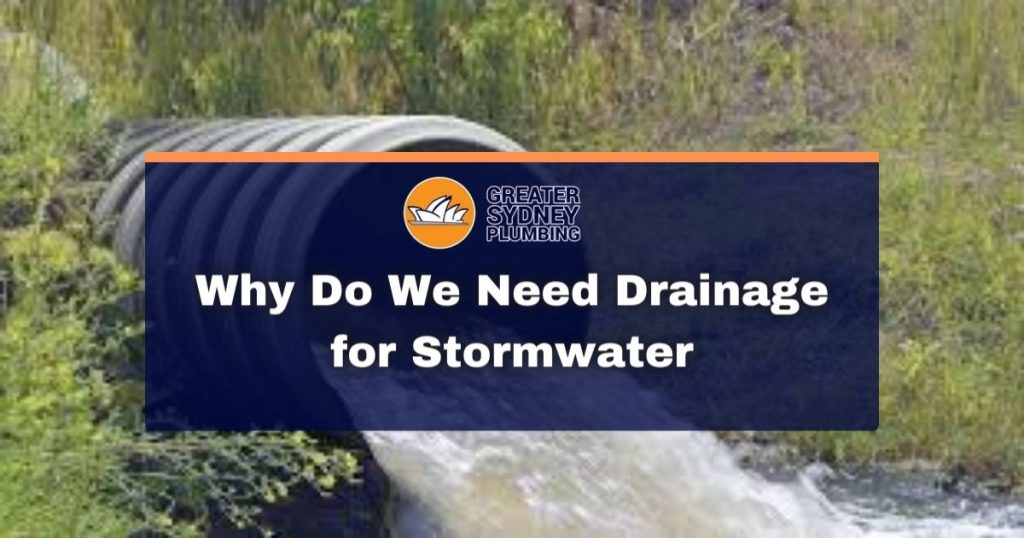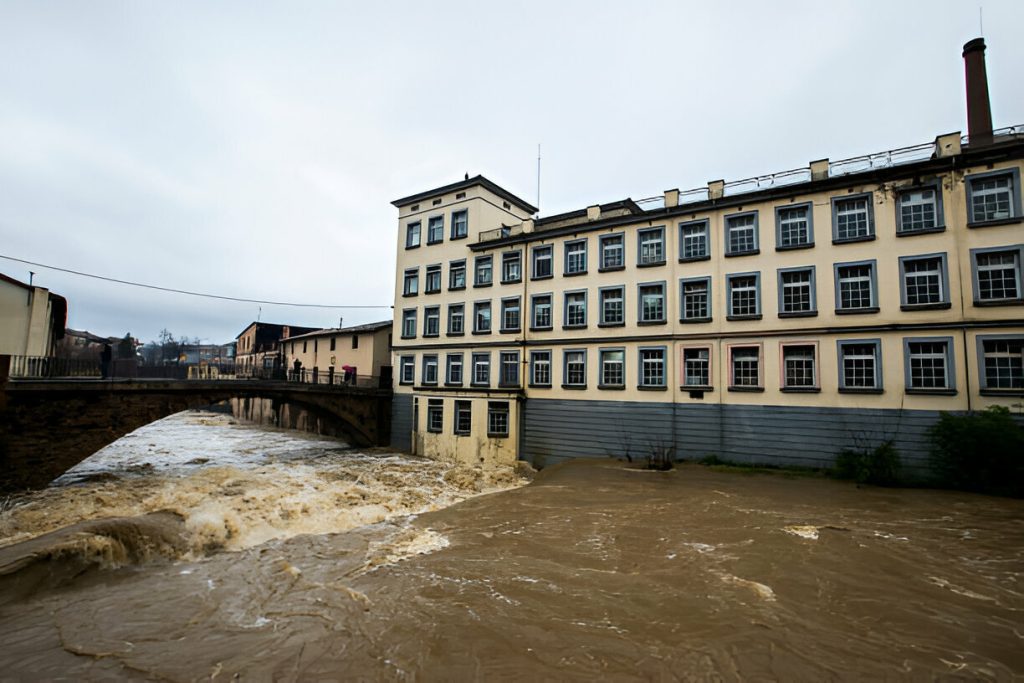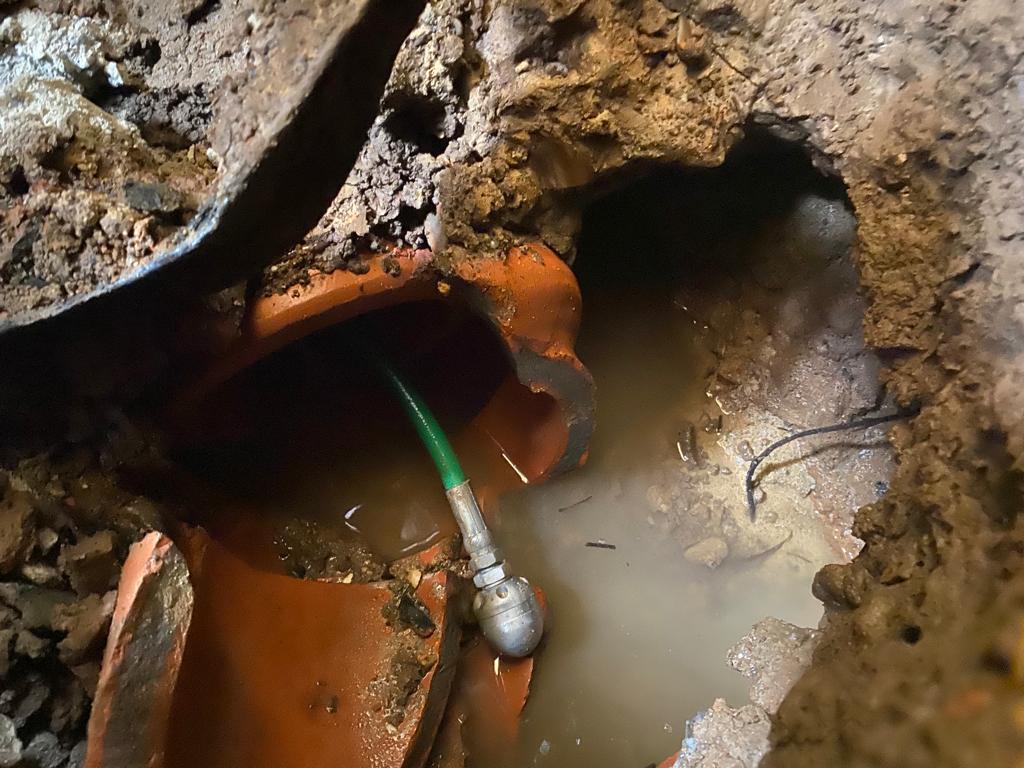Stormwater drainage refers to the infrastructure and systems designed to collect, convey, and manage rainwater runoff from impervious surfaces like roofs, roads, sidewalks, and parking lots. The primary goal of stormwater drainage is to prevent flooding, erosion, and water pollution by efficiently directing excess water away from developed areas and into appropriate outlets such as streams, rivers, lakes, or the ocean.
In natural landscapes, rainwater is absorbed by the soil, filtered through vegetation, and slowly released into groundwater or surface water bodies. However, in urban and suburban environments with extensive paved surfaces, the water cannot penetrate the ground and instead flows quickly over these surfaces, picking up pollutants like oil, chemicals, sediment, and debris along the way.
Without proper stormwater management, this runoff can overwhelm streams and rivers, cause flooding, and degrade water quality.
Why Do We Need Drainage for Stormwater?

There are several critical reasons why effective stormwater drainage is necessary:
- Flood Prevention: By collecting and directing excess rainwater away from buildings, roads, and other infrastructure, stormwater drainage systems help prevent flooding that can damage property and pose risks to public safety.
- Erosion Control: High-velocity stormwater runoff can erode soil, destabilize hillsides, and damage streambanks. Drainage systems help reduce the speed and volume of runoff, minimizing its erosive power.
- Water Quality Protection: Stormwater can carry a wide range of pollutants, including sediment, nutrients, bacteria, oils, and heavy metals. Drainage systems often incorporate features like detention basins, infiltration trenches, and vegetated swales that help filter and treat runoff before it reaches waterways.
- Groundwater Recharge: Some stormwater management practices, such as permeable pavements and infiltration basins, allow runoff to percolate into the soil, replenishing groundwater aquifers.
- Compliance with Regulations: Many municipalities have stormwater management regulations that require developers to implement drainage systems to mitigate the impacts of increased runoff from new construction.
What are the Components of a Storm Drain System
A typical storm drain system consists of several key components that work together to collect, convey, and discharge stormwater runoff:
- Inlets or Catch Basins: These are the openings, usually located along curbs or in low-lying areas, where stormwater enters the drainage system. Inlets often have grates to prevent large debris from entering the pipes.
- Pipes: A network of underground pipes, typically made of concrete, plastic, or metal, carries the stormwater from inlets to the discharge point. The pipes are sized to accommodate the expected volume of runoff.
- Manholes: These are vertical shafts that provide access to the pipe network for inspection and maintenance. Manholes are typically located at pipe junctions, changes in pipe direction, and regular intervals along long pipe runs.
- Outfalls: The point where the stormwater leaves the drainage system and enters a receiving water body or infiltrates into the ground. Outfalls can be simple pipe outlets, or they may incorporate energy dissipation structures to reduce erosion.
In addition to these basic components, storm drain systems may include various stormwater management practices, such as:
- Detention Basins: These are excavated areas that temporarily store stormwater runoff, releasing it slowly to reduce peak flows and promote settling of sediment.
- Retention Ponds: Similar to detention basins, these ponds hold water permanently, providing both stormwater storage and water quality treatment through biological processes.
- Infiltration Trenches and Basins: These are excavated areas filled with gravel or other porous material that allow stormwater to percolate into the soil, promoting groundwater recharge and filtering pollutants.
- Vegetated Swales and Bioretention Cells: These are shallow, landscaped channels or depressions that slow down runoff, filter pollutants, and promote infiltration through vegetation and engineered soils.
- Permeable Pavements: These are alternative pavement surfaces, such as porous asphalt, pervious concrete, or interlocking pavers, that allow stormwater to pass through and infiltrate into the underlying soils.
Site Drainage and Civil Drainage

Site drainage refers to the management of stormwater within a specific development site, such as a residential subdivision, commercial property, or industrial complex. It involves the design and construction of drainage features like inlets, pipes, swales, and detention basins to control runoff generated within the site boundaries.
Civil drainage, on the other hand, encompasses the larger-scale stormwater management infrastructure that serves entire communities or regions. This includes the network of storm sewers, culverts, channels, and regional detention facilities that convey runoff from multiple sites to receiving water bodies.
The components of site drainage and civil drainage systems are similar, but the scale and complexity differ. Site drainage systems are typically designed by civil engineers or landscape architects and must tie into the larger civil drainage infrastructure. Civil drainage systems are usually planned and constructed by municipalities or regional authorities, often in coordination with transportation and land use planning efforts.
How Drainage Works for Stormwater from Residences

In residential areas, stormwater drainage typically involves a combination of on-site features and connections to the municipal storm sewer system. Here’s a general overview of how the process works:
- Roof Drainage: Rainwater that falls on rooftops is collected by gutters and downspouts, which direct the water away from the foundation of the house. Downspouts may discharge onto splash blocks or into underground pipes that carry the water to the street or a backyard drainage system.
- Yard Drainage: Runoff from lawns, gardens, and other pervious areas in a residential yard may be managed through grading, swales, or underground French drains. These features help direct water away from the house and toward the street or a designated drainage area.
- Street Drainage: Runoff from driveways, sidewalks, and streets is collected by curb inlets or catch basins, which are typically located at low points or intersections. The water enters the municipal storm sewer system through these inlets.
- Municipal Storm Sewer: The network of underground pipes and culverts carries the stormwater from residential streets and other areas to larger trunk lines, which eventually discharge into streams, rivers, or other receiving water bodies.
- On-Site Stormwater Management: In some cases, residential developments may be required to incorporate on-site stormwater management practices, such as rain gardens, infiltration trenches, or small detention basins, to reduce runoff volumes and improve water quality before the water enters the municipal system.
It’s important to note that the specific drainage requirements and practices for residential areas can vary depending on local regulations, site conditions, and the age of the development. Older neighborhoods may have combined sewer systems that carry both stormwater and sanitary sewage, while newer developments are typically required to have separate storm and sanitary sewer systems.
The Importance of Stormwater Drainage
Effective stormwater drainage is crucial for protecting public health, safety, and the environment. Some of the key reasons why it is so important include:
- Flooding Prevention: Inadequate or poorly maintained drainage systems can lead to localized flooding, which can damage buildings, infrastructure, and personal property. Flooding can also pose risks to public safety, especially in areas with high traffic or vulnerable populations.
- Erosion Control: Uncontrolled stormwater runoff can cause severe erosion, damaging streambanks, hillsides, and construction sites. This erosion can lead to property damage, loss of valuable topsoil, and degradation of aquatic habitats.
- Water Quality Protection: Stormwater runoff can carry a wide range of pollutants, including sediment, nutrients, bacteria, oils, and heavy metals, into nearby water bodies. These pollutants can harm aquatic life, degrade recreational areas, and contaminate drinking water sources. Effective drainage systems help filter and treat runoff, reducing the impact on water quality.
- Groundwater Recharge: In many areas, stormwater runoff is a significant source of groundwater recharge. Drainage systems that promote infiltration, such as permeable pavements and bioretention cells, can help maintain groundwater levels and support base flows in streams during dry periods.
- Compliance with Regulations: Most municipalities have stormwater management regulations that require developers and property owners to implement drainage systems that meet specific performance standards. Failure to comply with these regulations can result in fines, legal liabilities, and delays in project approvals.
- Sustainable Development: Effective stormwater management is an essential component of sustainable development practices. By incorporating green infrastructure and low-impact development techniques, communities can reduce the environmental footprint of new development and create more resilient, livable neighborhoods.
Who Designs and Builds Storm Drain Systems?
The design and construction of storm drain systems typically involve a collaborative effort among various professionals and stakeholders:
- Civil Engineers: Civil engineers, particularly those specializing in water resources or environmental engineering, are primarily responsible for designing storm drain systems. They use hydrologic and hydraulic models to size pipes, determine inlet locations, and specify stormwater management practices based on local regulations and site conditions.
- Landscape Architects: Landscape architects often collaborate with civil engineers to design site-specific stormwater management features, such as rain gardens, bioswales, and infiltration basins. They focus on integrating these features into the overall site design and selecting appropriate vegetation.
- Municipalities and Government Agencies: Local government agencies, such as public works departments or stormwater utilities, oversee the planning, design, and construction of municipal storm drain systems. They may have in-house engineering staff or contract with consulting firms to develop stormwater master plans and design regional drainage infrastructure.
- Developers and Contractors: Private developers are responsible for designing and constructing site-specific drainage systems within their projects, subject to municipal regulations and approval. They typically hire civil engineering firms and contractors to design and build these systems.
- Environmental Consultants: Environmental consulting firms may be involved in stormwater management projects to conduct site assessments, evaluate water quality impacts, and develop mitigation strategies. They may also assist with permitting and regulatory compliance.
When are Storm Drain Systems Designed and Built?
Storm drain systems are designed and built at various stages of the development process, depending on the scale and type of project:
- Land Use Planning: At the broadest level, stormwater management considerations are incorporated into land use plans, zoning regulations, and watershed management strategies. These high-level plans help guide the location and intensity of development based on the capacity of existing drainage infrastructure and the sensitivity of receiving water bodies.
- Site Development: As individual development projects are proposed, site-specific stormwater management plans are created. These plans include the design of drainage systems, such as inlets, pipes, and detention basins, as well as any required stormwater treatment practices. The design process typically involves site surveys, hydrologic and hydraulic modeling, and coordination with municipal authorities.
- Construction: Once the stormwater management plan is approved, the drainage system is constructed as part of the overall site development process. This may involve excavation, installation of pipes and structures, grading, and landscaping. Proper construction oversight is critical to ensure that the system is built according to the approved plans.
- Post-Construction: After the drainage system is built, ongoing maintenance and inspections are necessary to ensure its continued function. This may include regular cleaning of inlets and pipes, sediment removal from detention basins, and upkeep of vegetated stormwater management practices. Many municipalities have post-construction stormwater management requirements that mandate ongoing maintenance and reporting.
Stormwater Drain Design Considerations
Designing an effective and efficient stormwater drainage system involves a range of technical, environmental, and regulatory considerations. Some of the key factors that designers must take into account include:
- Hydrology: Understanding the hydrologic characteristics of the site and its watershed is essential for sizing drainage infrastructure and selecting appropriate stormwater management practices. This includes analyzing historical rainfall data, calculating runoff volumes and peak flow rates, and evaluating the potential impacts of future land use changes.
- Topography: The site’s topography, including slopes, depressions, and natural drainage patterns, influences the layout and design of the drainage system. Designers must work with the existing terrain to minimize excavation and ensure proper drainage flow.
- Soil Conditions: The type, permeability, and stability of the site’s soils affect the feasibility and performance of various stormwater management practices. For example, infiltration-based practices may not be suitable in areas with high groundwater tables or poorly draining soils.
- Land Use: The type and intensity of land use on the site and in the surrounding area influence the quantity and quality of stormwater runoff. Designers must consider factors such as impervious surface coverage, pollutant loading, and the potential for spills or illicit discharges.
- Regulatory Requirements: Stormwater management is subject to a range of federal, state, and local regulations, including water quality standards, flood control requirements, and erosion and sediment control guidelines. Designers must ensure that the drainage system complies with all applicable regulations and obtains necessary permits.
- Maintenance: The long-term performance of a stormwater drainage system depends on regular maintenance and upkeep. Designers should consider maintenance requirements when selecting materials, specifying equipment, and laying out the system components. Easy access for inspection and cleaning is critical.
- Cost: The design of a stormwater drainage system must balance performance, regulatory compliance, and construction and maintenance costs. Designers should evaluate the life-cycle costs of different options and seek cost-effective solutions that meet the project’s objectives.
- Aesthetics and Amenities: In many cases, stormwater management practices can be integrated into the site’s landscaping and public spaces, providing both functional and aesthetic benefits. Designers should consider opportunities to create multi-purpose amenities, such as recreational trails, wildlife habitat, and educational features, in conjunction with drainage infrastructure.
Closing Words
Effective stormwater drainage is essential for protecting public health, safety, and the environment in urban and suburban areas. By collecting, conveying, and managing runoff from impervious surfaces, storm drain systems help prevent flooding, control erosion, and mitigate the impacts of development on water quality and aquatic habitats.
Designing and building effective stormwater drainage systems requires a collaborative effort among civil engineers, landscape architects, government agencies, developers, and contractors.
These systems must be carefully planned and engineered to meet a range of technical, environmental, and regulatory requirements, while also considering factors such as cost, maintenance, and community amenities.As communities continue to grow and develop, the importance of stormwater management will only increase.



